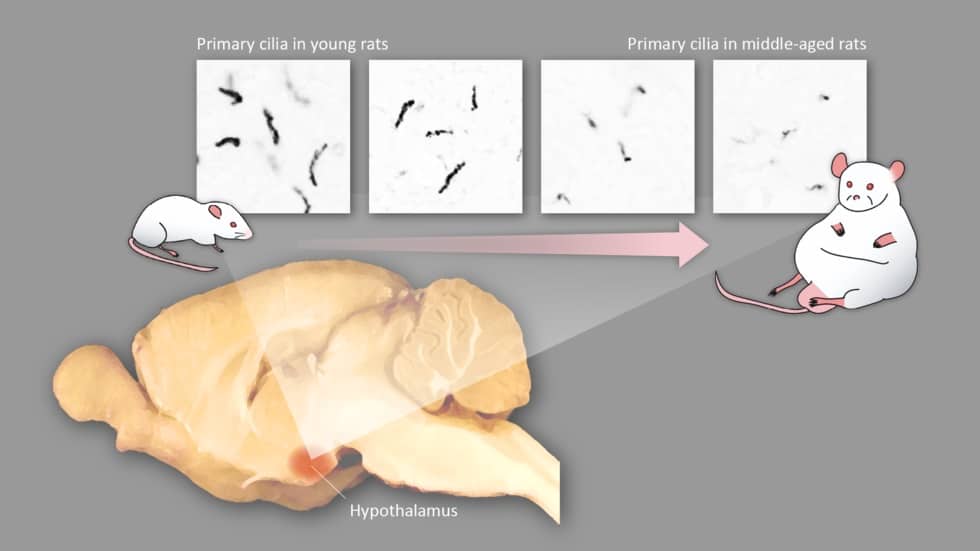Researchers at Nagoya University and their Japanese colleagues found that alterations in the structure of neurons in the hypothalamus, a brain region, can contribute to obesity in middle-aged individuals. This area controls our metabolism and appetite.
They discovered that a protein called the melanocortin-4 receptor (MC4R) is essential. It detects when we overeat and aids in controlling our appetite and metabolism to prevent obesity.
Their study using rats observed that MC4Rs are concentrated in tiny structures called primary cilia, which act like antennas and extend from certain groups of neurons in the hypothalamus.
These primary cilia grew shorter in older rats, which decreased the number of MC4Rs. This drop in MC4Rs led to weight gain.
Professor Kazuhiro Nakamura of the Nagoya University Graduate School of Medicine, the study’s lead author, said, “We believe that a similar mechanism exists in humans as well. We hope our finding will lead to a fundamental treatment for obesity.”
We mainly gain weight as we get older, increasing our risk of becoming overweight or obese. This can lead to health problems like diabetes and high cholesterol. Previous studies suggested that weight gain in middle age is due to a slowing metabolism as we age, but how this happens needs to be clarified.
When our bodies receive a signal from a melanocortin chemical that we have overeaten, MC4R helps speed up metabolism and decrease appetite. The researchers examined where MC4Rs are located in the rat brain using a particular antibody they developed. They found that MC4Rs are found only in specific groups of neurons in the hypothalamus, specifically in tiny structures called primary cilia.
The researchers measured the length of MC4R-containing primary cilia and microscopic structures in the brains of young (9-week-old) and middle-aged (6-month-old) rats. They discovered that these cilia were much shorter in middle-aged rats than in young rats. As a result, the metabolism and ability to burn fat in middle-aged rats were significantly lower than in young rats.
Additionally, they looked at these cilia in rats given various diets. They discovered that these cilia progressively shrank with age in rats fed a typical diet. On the other hand, rats on a restricted diet shortened more slowly, but rats on a high-fat diet shortened more quickly.
The team observed that in rats subjected to two months of dietary restriction, the cilia that had disappeared with age were regenerated, which was interesting.
The team used genetic techniques in the study to shorten MC4R+ cilia in young rats. These rats ate more and had a slower metabolism, causing them to gain weight.

Additionally, the team gave leptin to rats with shortened MC4R+ cilia, hoping it would decrease their appetite. Surprisingly, their hunger didn’t decrease, suggesting that leptin could not fight obesity.
Dr. Manami Oya, the lead author, explained that “this leptin resistance is common in obese humans, too. It has been a challenge to treat obesity because of this resistance. The study suggests that in obese patients, excessive leptin from fat tissue might shorten MC4R+ cilia, making melanocortin less effective and increasing the risk of obesity.”
Prof. Nakamura said, “Moderate eating habits could maintain MC4R+ cilia long enough to keep the brain’s anti-obesity system in good shape even as we age.”
The study concluded that the age-related shortening of MC4R+ cilia causes middle-aged obesity and leptin resistance in rats. Dietary restriction is one strategy for treating and preventing overweight and obesity, as the researchers have shown.
Journal reference:
- Manami Oya, Yoshiki Miyasaka, et al., Age-related ciliopathy: Obesogenic shortening of melanocortin-4 receptor-bearing neuronal primary cilia. Cell Metabolism. DOI: 10.1016/j.cmet.2024.02.010.
